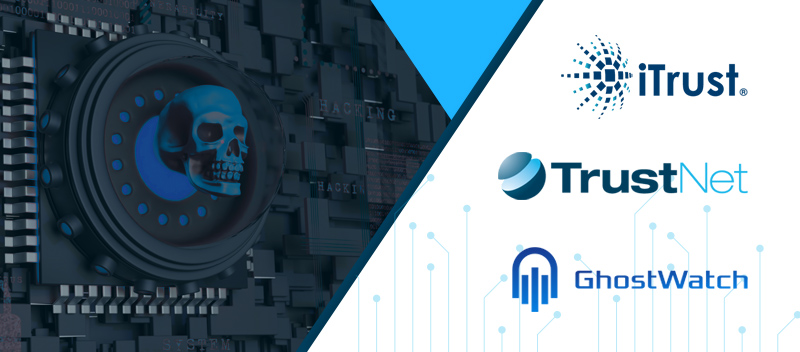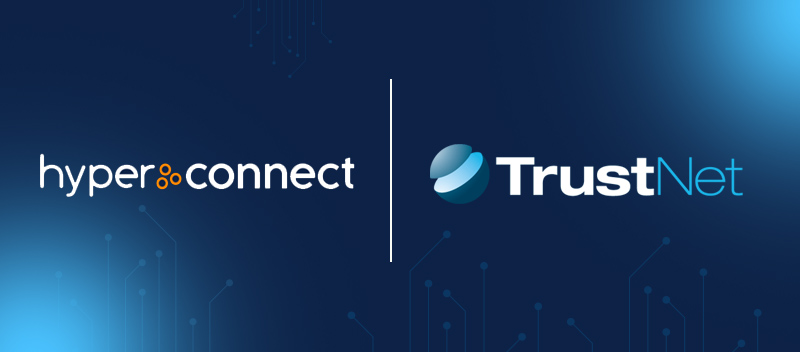Beyond the Audit: Proactive SOC 2 Compliance Strategies for 2024

As we navigate through 2024, the importance of SOC 2 or Systems and Organizations Controls 2 in maintaining data security and privacy continues to surge. With escalating cybersecurity threats, businesses are tasked with protecting their sensitive data and upholding the trust of their customers and stakeholders.
SOC 2 is a critical standard to assess how effectively a service organization manages its information. As we progress deeper into the digital age, achieving SOC 2 compliance has transitioned from an option to a necessity for businesses across various sectors.
However, the compliance landscape is witnessing a significant paradigm shift. The traditional reactive approach, which involves responding to compliance requirements as they arise or in the aftermath of an audit, is increasingly viewed as insufficient. Instead, a proactive compliance strategy is becoming the preferred approach.
Proactive compliance is about anticipation and preparedness. It involves identifying potential compliance issues before they transform into significant problems and implementing prevention strategies. This approach ensures continuous compliance and significantly minimizes the risk of non-compliance and the associated penalties.
This whitepaper aims to guide you through the transition from reactive to proactive SOC 2 compliance strategies. We will unpack the benefits of proactive compliance, offer practical tips for implementing a proactive compliance program, and provide insights into what SOC 2 compliance might look like in 2024 and beyond.
By adopting a proactive approach to SOC 2 compliance, businesses can stay ahead of the curve, ensure long-term success, and foster a culture of compliance that permeates every level of the organization. Let’s delve deeper into how we can transform your SOC 2 compliance journey from a burdensome necessity into a strategic advantage.
Understanding SOC 2 Compliance
SOC 2 compliance is meeting the standards the American Institute of Certified Public Accountants (AICPA) sets for managing customer data. This management is evaluated based on five Trust Services Criteria, namely:
Security. Information and systems are protected against unauthorized access, unauthorized disclosure of information, and damage to systems that could compromise the availability, integrity, confidentiality, and privacy of information or systems and affect the entity’s ability to achieve its objectives.
Security refers to the protection of
- information during its collection or creation, use, processing, transmission, and storage, and
- systems that use electronic information to process, transmit, transfer, and store information to enable the entity to meet its objectives. Controls over security prevent or detect the breakdown and circumvention of segregation of duties, system failure, incorrect processing, theft or other unauthorized removal of information or system resources, misuse of software, and improper access to or use of, alteration, destruction, or disclosure of information.
Availability. Information and systems are available for operation and use to meet the entity’s objectives.
Processing Integrity. System processing is complete, valid, accurate, timely, and authorized to meet the entity’s objectives.
Confidentiality. Information designated as confidential is protected to meet the entity’s objectives. Confidentiality addresses the entity’s ability to protect information designated as confidential from its collection or creation through its final disposition and removal from the entity’s control in accordance with management’s objectives.
Privacy. Personal information is collected, used, retained, disclosed, and disposed of to meet the entity’s objectives.
Data security has become a top priority for businesses worldwide in today’s digital age. Achieving SOC 2 compliance is a testament to a company’s commitment to robust data protection measures that are consistently and effectively adhered to.
More than just a certification, SOC 2 compliance helps businesses establish and maintain stringent data protection standards, fostering confidence among their customers and stakeholders.
In an era where data breaches are becoming increasingly common, SOC 2 compliance provides a competitive edge. It serves as evidence of a company’s commitment to data security, which can be a deciding factor for customers when choosing between service providers. Also, it aids in meeting regulatory requirements, avoiding penalties, and protecting the company’s reputation.
For more on our SOC 2 compliance services Click Here
The Key Differences of SOC 1, SOC 2, and SOC 3 Compliance
The distinctions between SOC 1, SOC 2, and SOC 3 can be summarized as follows:
| SOC 1 | SOC 2 | SOC 3 | |
| Purpose | Evaluates and reports on a service organization's internal controls' impact on clients' financial reporting | Assesses and reports on a service organization's internal controls pertaining to the security, availability, processing integrity, confidentiality, and privacy of customer data (i.e., the "Trust Services Criteria") | Provides a high-level overview of the information in a SOC 2 report, but without the same level of detailed controls and testing information |
| Scope | Covers the handling and safeguarding of customer data, including both business and IT operations | Covers any or all of the five Trust Services Criteria | Primarily focuses on the same aspects as SOC 2, but with a more general audience in mind |
| Audience | Executives, external auditors | Executives, sales teams, business partners, potential customers, regulators, external auditors | Prospective customers, partners, and other stakeholders who need assurance of the organization's controls but do not require detailed information |
| Example | An organization offers third-party billing services for healthcare facilities. The healthcare facilities may request a SOC 1 report to audit the security measures of the billing provider. | A cloud service provider stores and safeguards client data. Instead of clients inspecting the security protocols and systems in place to protect their data, the provider can share a SOC 2 report detailing the controls in place to secure their data. | A technology company wants to demonstrate its commitment to security without sharing the detailed testing and control information contained in a SOC 2 report. It provides a SOC 3 report to its customers and partners, which includes the auditor's opinion but omits a detailed description of tests and results. |
The Evolution of SOC 2 Compliance
The roots of SOC 2 stretch back to the early 1970s, with the American Institute of Certified Public Accountants (AICPA) playing a pivotal role in its creation. Initially, SOC 2 audits were primarily focused on physical and technical controls. However, as the digital landscape evolved, the need for a more comprehensive oversight mechanism became apparent.
SOC 2 was launched in 2010 by the AICPA in response to this growing need. It evolved from the Statement on Auditing Standards (SAS) 70, an old audit Certified Public Accountants (CPAs) used to assess firms’ internal controls.
With the rise of cloud services and third-party vendors, the focus of SOC 2 audits expanded to include a system’s availability, processing integrity, confidentiality, and privacy. This shift towards a more encompassing framework marked the transition from reactive to proactive compliance.
Proactive compliance involves anticipating potential compliance issues and implementing strategies to prevent them, thereby ensuring continuous compliance and significantly reducing the risk of non-compliance.
The Impact of Emerging Technologies on SOC 2 Compliance
The impact of emerging technologies on SOC 2 compliance is multifaceted and continues to evolve. Here’s a closer look at some key technologies:
- Cloud Services
Cloud services have revolutionized the way organizations operate, offering scalability, flexibility, and cost-efficiency. However, they also present new challenges for SOC 2 compliance. Data stored in the cloud can be accessed from anywhere, which increases the risk of unauthorized access and data breaches. Therefore, organizations must ensure that their cloud service providers are SOC 2 compliant and that they adequately protect their data.
- Artificial Intelligence (AI)
AI has become a critical part of many industries, offering innovative solutions for data analysis, automation, and more. However, AI systems also pose unique challenges for SOC 2 compliance. They often process large volumes of data, some of which may be sensitive, necessitating robust security measures. Also, AI algorithms can be problematic, making it hard to ensure they meet compliance requirements.
- Regulatory Technology (RegTech)
RegTech refers to technology designed to streamline regulatory compliance. It can automate complex processes, reduce human error, and make compliance faster, simpler, and more cost-effective. RegTech solutions can significantly aid SOC 2 compliance by automating audit trails, monitoring user activity, and managing incident responses.
- Generative AI Applications
Generative AI applications, such as chatbots, are increasingly being used by organizations to improve customer service. However, these applications need to be SOC 2 compliant as they often handle sensitive customer data. They must have robust security measures, including data encryption and strong access controls.
As we move further into 2024, these and other emerging technologies will continue to shape the landscape of SOC 2 compliance. Organizations must stay abreast of these changes to remain compliant and protect their sensitive data.
Proactive SOC 2 Compliance Strategies
Proactive compliance involves taking preventative measures rather than just responding to incidents as they occur. This section will explore several strategies to help organizations maintain continuous SOC 2 compliance.
1. Building a Culture of Compliance and Security
Creating a culture of compliance and security is a cornerstone of proactive SOC 2 compliance. This goes beyond merely having policies in place; it involves instilling a mindset where every employee understands the importance of data security and their role in maintaining it.
Regular training sessions can be used to keep employees updated on the latest threats and best practices for data security. Awareness campaigns can reinforce the importance of compliance and encourage employees to take personal responsibility for protecting the organization’s data.
2. Implementing Continuous Monitoring and Risk Assessment
Continuous monitoring and risk assessment are key components of a proactive SOC 2 compliance strategy. By constantly monitoring their systems, organizations can identify potential vulnerabilities or gaps in their security measures and address them before they can be exploited.
Risk assessments involve identifying potential threats, evaluating the likelihood of those threats occurring, and developing strategies to mitigate them. These assessments should be conducted regularly to account for the rapidly changing threat landscape.
3. Leveraging Automation and AI for Compliance Management
Automation and artificial intelligence (AI) can significantly enhance an organization’s ability to manage compliance. Automated tools can perform routine checks and audits more efficiently and accurately than manual processes, freeing up valuable resources for other tasks.
AI can analyze large volumes of data to identify patterns that might indicate a potential compliance issue. By predicting these issues before they arise, organizations can take preventative measures to avoid them.
4. Establishing a Robust Incident Response Plan
A robust incident response plan is an essential part of a proactive SOC 2 compliance strategy. This plan should outline the steps to be taken in the event of a security incident, from initial detection to recovery.
It should also include procedures for communicating with stakeholders and reporting the incident to relevant authorities. Having a well-defined incident response plan can help organizations minimize the damage caused by a data breach and recover more quickly.
5. Ensuring Vendor Risk Management
Vendor risk management is a critical aspect of SOC 2 compliance. Organizations must ensure that their third-party vendors also adhere to SOC 2 standards, as a breach at a vendor’s end could compromise the organization’s data security.
This process involves conducting regular audits and assessments of vendors and implementing controls to manage any identified risks.
Case Studies and Best Practices
This section presents two case studies of organizations that have successfully implemented proactive SOC 2 compliance strategies. These real-world examples provide valuable insights into the benefits of these strategies and the best practices that can be adopted by other organizations.
Calendly
Calendly, a leading CRM and meeting scheduling company with a global presence, sought to enhance its cybersecurity measures by implementing several protocols, including SOC 2, NIST Cyber Security Framework Risk Assessment, HIPAA, and ISO 27001. To achieve this, they partnered with TrustNet, a renowned cybersecurity consulting firm.
With TrustNet’s assistance, Calendly was able to identify and prioritize potential cybersecurity threats. This proactive approach led to improved compliance with industry regulations, strengthening their security posture.
The implementation of these measures had far-reaching effects on Calendly’s business operations. It not only attracted new customers and business partners who valued the stringent security measures but also boosted the confidence levels of existing customers.
This significant growth in business is a testament to how robust cybersecurity measures, including proactive SOC 2 compliance, can contribute to a company’s success and expansion.
ExperiencePoint
ExperiencePoint, a global leader in innovation training, also embarked on a journey towards achieving SOC 2 Type 1 Assessment audit certification with TrustNet’s guidance. Their successful completion of this certification process demonstrates their commitment to ensuring robust data security for their clients.
Upon securing the certification, David Haapalehto, ExperiencePoint’s Director of Project Management and Process Optimization, expressed satisfaction, underscoring that it would enhance clients’ trust in the organization’s ability to safeguard personal and organizational data.
This achievement reinforces ExperiencePoint’s dedication to placing client needs at the forefront of their operations. It also highlights TrustNet’s crucial role in guiding organizations toward robust cybersecurity practices and achieving regulatory compliance.
Lessons Learned and Best Practices for Organizations
These case studies highlight several best practices for organizations aiming to implement proactive SOC 2 compliance strategies:
- Leverage Expertise: Both Calendly and ExperiencePoint partnered with a trusted cybersecurity consulting firm, TrustNet, to guide their compliance efforts. This underscores the value of leveraging external expertise when implementing complex security measures.
- Adopt a Proactive Approach: Both companies took a proactive approach to identify and prioritize potential cybersecurity threats. This allowed them to address these threats before they could impact their business operations.
- Prioritize Client Trust: Both organizations recognized that achieving SOC 2 compliance would bolster client trust in their ability to protect personal and organizational data. This focus on client trust should be a key consideration for any organization planning to implement SOC 2 compliance strategies.
- Recognize the Business Benefits: Both Calendly and ExperiencePoint experienced business benefits as a result of their compliance efforts, including attracting new customers and partners and enhancing the confidence of existing clients. This demonstrates that investing in SOC 2 compliance can yield significant business returns.

Addressing Common SOC 2 Compliance Hurdles: Effective Strategies for Success
Understanding the Scope: The SOC 2 framework is comprehensive and intricate, which can be perplexing for organizations trying to navigate its complexities. To surmount this challenge, organizations may want to engage a seasoned expert like TrustNet, who has a deep understanding of SOC 2 compliance.
Resource Limitations: A common hurdle that many organizations face is the scarcity of resources, both in terms of manpower and time. This can pose a significant challenge in the pursuit of SOC 2 compliance. To tackle this, it’s advisable to rank tasks based on their urgency and distribute resources accordingly. If needed, consider delegating some functions to reliable third-party entities.
Sustaining Ongoing Compliance: Achieving SOC 2 certification is not a single event but an ongoing commitment. This continuous requirement can feel daunting for many organizations. To manage this, it’s beneficial to establish a continuous monitoring program and schedule regular internal audits to ensure enduring compliance.
Data Governance: The task of ensuring all data is securely handled and properly managed can be formidable. To address this, organizations are recommended to put robust data governance policies and procedures in place, which include strong encryption methods and stringent access controls.
Change Administration: The swift pace of technological advancements and evolving business processes can complicate the maintenance of SOC 2 compliance. To counteract this, it’s crucial to implement a solid change administration process that involves regular reassessments and updates to existing policies and procedures.
Final Thoughts: Proactive SOC 2 Compliance for Long-Term Success
This whitepaper has highlighted the significance of strategic foresight in understanding and addressing these complexities. The fast-paced nature of technological advancement necessitates businesses to stay ahead of the curve. A reactive approach to SOC 2 compliance may leave organizations vulnerable to breaches and non-compliance penalties.
On the other hand, proactively addressing SOC 2 requirements offers numerous benefits. It not only helps ensure robust data security but also fosters trust among clients and stakeholders, thereby enhancing the organization’s reputation and market standing.
To this end, it is incumbent upon organizations to adopt forward-thinking strategies that ensure long-term success. This includes staying abreast of technological advancements, implementing robust data management policies, and establishing a solid change administration process. Moreover, it involves leveraging tools and solutions designed to streamline and simplify the compliance process.
TrustNet: Your Strategic Partner in Navigating the Complexities of SOC 2 Compliance
As a leading expert in SOC 2 compliance, TrustNet offers comprehensive solutions to help organizations navigate the complexities of SOC 2 standards. From understanding the far-reaching scope of SOC 2 to tackling resource limitations and maintaining ongoing compliance, TrustNet provides invaluable support every step of the way.
TrustNet’s solutions are built on a deep understanding of the evolving data security landscape and the nuances of SOC 2 compliance. They are designed to empower organizations to manage their data more effectively, maintain continuous compliance, and adapt to rapid changes in technology and business processes.
Proactive SOC 2 compliance is not just an option but a necessity for businesses that value data security and privacy. The dynamic interplay of emerging technologies and SOC 2 compliance poses challenges but also offers opportunities for organizations willing to innovate and adapt.
By leveraging TrustNet’s solutions and expertise, businesses can turn these challenges into opportunities, secure their data, and ensure long-term success in an increasingly interconnected world.




